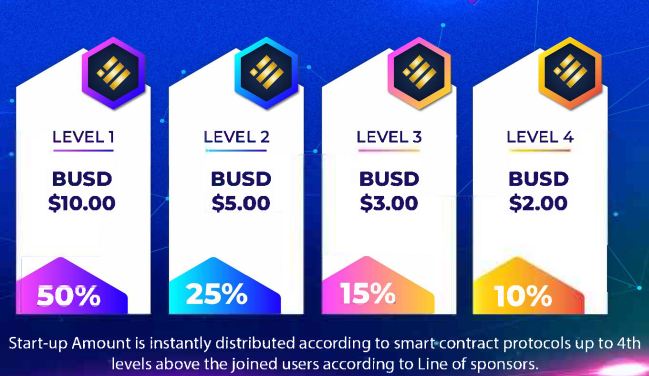Background
The importance of having access to relevant political information in a democratic system is widely recognized. When correct, easily digestible, and extensive knowledge is readily available, citizens have the ability to devise their own responses to political events and, as a result, participate in the political process.
Social media contribute to the formation of public opinion by providing citizens with a forum in which they can voice their thoughts and by facilitating the growth of a consensus position in an era in which face-to-face interaction with political elites is relatively rare.
Social media has been found useful in Nigeria elections. The rise in social media activist for political mobilizations in 2022 has risen to atleast 45%.compared to other pre-election year with Peter Obi leading in all social media sites. Obi, who is the presidential candidate of Labour Party in 2023 elections, has gained social media popularity in recent times and has succeeded in creating a slogan “Obidient” which rings positive bell in the hears of the electorate who are majorly youths Musliudeen (2022).
Social media not only make information more reachable but are also likely the sole channel through which the general people can acquire information that is not biased or slanted politically.
In order for the information to be successful, the general public needs to have access to political information that is objective and not political propaganda. In addition, if the general population is not sufficiently informed to make decisions, the political establishment might not be held accountable for their actions. Moreover, if the general population is not sufficiently engaged in democratic processes, the viability of democracy itself might be called into question.
Even though there are still traditional media channels that give political news, current technology breakthroughs, notably the internet, have helped to the distribution of news items and the rise of citizen journalism. This is particularly true in the United States. The number of people who currently have access to the internet is increasing as a direct result of the growing number of people who use smartphones.
The recent emergence of social media as a major force that must be reckoned with in all areas of communications has caused a shift in the manner in which communication is managed on all fronts, whether they are social, economic, or political. This shift has had an effect on the way communication is handled on all fronts. As a result of this, political communication is now becoming an increasingly important aspect during election campaigns. This is because politicians and the general public are increasingly using social media into their communication. Therefore, political communication is not exempt from the effects that are caused by social media.
Social media is a very competitive tool. Millions of political aspirants will jostle for the attention of the same audience. This poses the challenge of creative online crowdsourcing and increases the power of social media influencers. To a considerable extent, the outcome of the 2023 elections may be influenced majorly by social media. (Premiumtimes report 2022)
However, in order to cultivate greater political discourse and more political involvement among all people, substantial consideration needs to be given to the assurance of accuracy and in-depth analysis of political topics in the social networking platforms that many young minds subscribe to. In an effort to maintain their relevance in the public eye, politicians are becoming increasingly active on social media.
In this study, the political issues that are being discussed on social media were assessed for their relative significance in terms of how they are affecting policy in Nigeria. The researcher focused primarily on analyzing how social media especially Facebook and Twitter are utilized in Nigeria, as well as how this has impacted political debate in 2023 presidential elections.
In Nigeria, social media platforms have evolved into highly effective political tools in recent years. According to the statistics available in January 2021, there were 33 million people using social media in Nigeria. Because more than 48 percent of Nigerians have access to cell phones and only 36 percent have internet access, approximately 40 percent of the country’s population, or nearly 90 million people, are active on social media. As of the year 2021, the total number of citizens who were registered to vote in the country was 89 million. Because of this, it is reasonable to assume that the majority of voters have access to social media. This indicates that social and online media have almost completely replaced the combined mix of other media as crucial avenues of communication in matters pertaining to society and politics.
The use of social media platforms has become an increasingly important arena for the shaping of public opinion and the establishment of priorities. The extent to which social media can affect and determine voting behavior may be limited but still significant, but the jury is still out on whether or not it plays a role in determining the outcomes of political contests. During the presidential election in 2015, the opposition party known as the All Progressives Congress (APC) made extensive use of social media in order to de-market the Peoples Democratic Party (PDP).
As we get closer to the year 2023, political actors and political parties are jumping on the social media bandwagon. As a result, the landscape of political communication in Nigeria has never been so heterogeneous, fragmented, energizing, chaotic, creative, and equally polarizing at the same time. Political actors are (re)branding themselves as serious political contenders at both the state and national levels by engaging audiences on social media in a regular, humorous, and strategic manner. This is happening at both the state and the national levels. Some of their audience members have a high level of intelligence and are able to differentiate between political razmataz and genuine political engagement and enlightenment.
The use of social media platforms has become an increasingly important arena for the shaping of public opinion and the establishment of priorities. The extent to which social media can affect and determine voting behavior may be limited but still significant, but the jury is still out on whether or not it plays a role in determining the outcomes of political contests. During the presidential election in 2015, the opposition party known as the All Progressives Congress (APC) made extensive use of social media in order to de-market the Peoples Democratic Party (PDP).
According to preliminary research carried out in Nigeria during the elections in 2015, social media played a significant role in shifting popular support among young voters away from the then-current Federal Government. By the time of the 2019 presidential election, social media had reached maturity, and instead of young millennials and young adults dominating that space, we noticed that even older people were relying on them for political information and debates. This shift in demographics was a significant departure from previous trends.
The platforms allow for rapid dissemination of information and messages, which can have significant repercussions. Because the government has so little control over social media, the open space that has been created as a result has become a marketplace for ideas and viewpoints. People who support or oppose a political actor, party, or politician can easily attempt to sway others to their point of view through the use of social media.
Activists, whistleblowers, and opposition politicians, all of whose voices were suppressed by the government that was in power, now have the opportunity to engage with the general populace thanks to social media. The ability to conceal potentially harmful information became increasingly difficult. As has been widely discussed, the complementarity of the APC’s online and offline campaign strategies, as well as its robust grassroots support base and organizational structure, contributed in part to the party’s massive victory in the most recent elections. This was one of the key factors.





